Search
Search Results
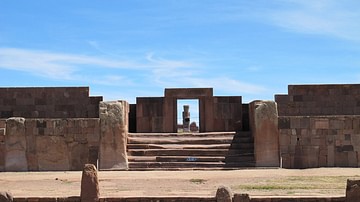
Definition
Tiwanaku
Tiwanaku (or Tiahuanaco) was the capital of the Tiwanaku empire between c. 200 - 1000 CE and is situated in the Titicaca basin. At an altitude of 3,850 metres (12,600 ft) it was the highest city in the ancient world and had a peak population...
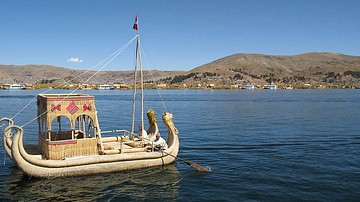
Definition
Lake Titicaca
Lake Titicaca is located between Bolivia and Peru and, at an altitude of 3,800 metres (12,500 feet), it is the world's highest navigable lake. The tundra plain known as the altiplano stretches to the south and was the location of Tiwanaku...

Definition
Inca Civilization
The Inca civilization flourished in ancient Peru between c. 1400 and 1533 CE. The Inca Empire eventually extended across western South America from Quito in the north to Santiago in the south. It was the largest empire ever seen in the Americas...
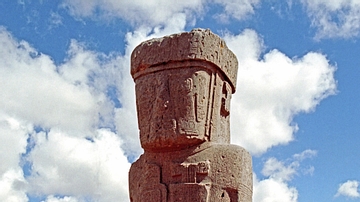
Image
Ponce Monolith, Tiwanaku
The monumental stone statue from Tiwanaku, Bolivia, known as the Ponce Monolith. Such statues perhaps represented the race of stone giants which first populated the world in pan-Andean mythology. Gold pins and traces of piant indicate they...

Image
Kalasasaya Entrance, Tiwanaku
The monumental stepped entrance to the sacred Kalasasaya precinct at Tiwanaku, Bolivia, c. 300 CE. Framed by the sandstone portal is one of the huge stone statues found at the site.
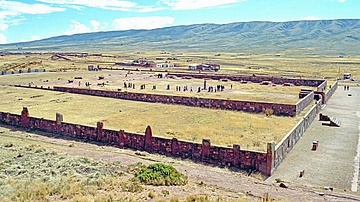
Image
Kalasasaya, Tiwanaku
The Kalasasaya sacred precinct at Tiwanaku, Bolivia, c. 300 CE. The walled compound of sandstone blocks created a sacred space measuring 130 by 120 metres used for public and religious ceremonies.
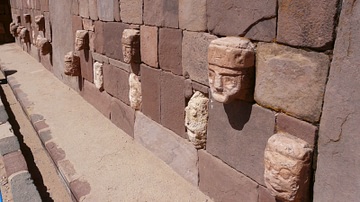
Image
Semi-Subterranean Temple, Tiwanaku
One of the sandstone interior walls from the Semi-Subterranean Temple court at Tiwanaku, Bolivia, c. 300 CE. The sunken court was reserved for more select religious ceremonies and the stone heads suggest those involving human sacrifice. The...
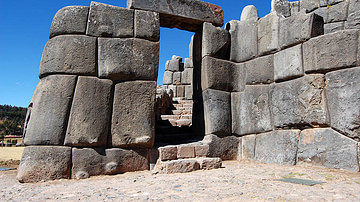
Definition
Cusco
Cuzco (also Cusco or Qosqo) was the religious and administrative capital of the Inca Empire which flourished in ancient Peru between c. 1400 and 1534 CE. The Incas controlled territory from Quito to Santiago, making theirs the largest empire...

Definition
Wari Civilization
The Wari civilization flourished in the coastal and highland areas of ancient Peru between c. 450 and c. 1000 CE. Based at their capital Huari, the Wari successfully exploited the diverse landscapes they controlled to construct an empire...
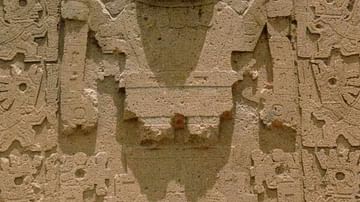
Definition
Viracocha
Viracocha was the supreme god of the Incas. He is also known as Huiracocha, Wiraqoca and Wiro Qocha. Considered the creator god he was the father of all other Inca gods and it was he who formed the earth, heavens, sun, moon and all living...